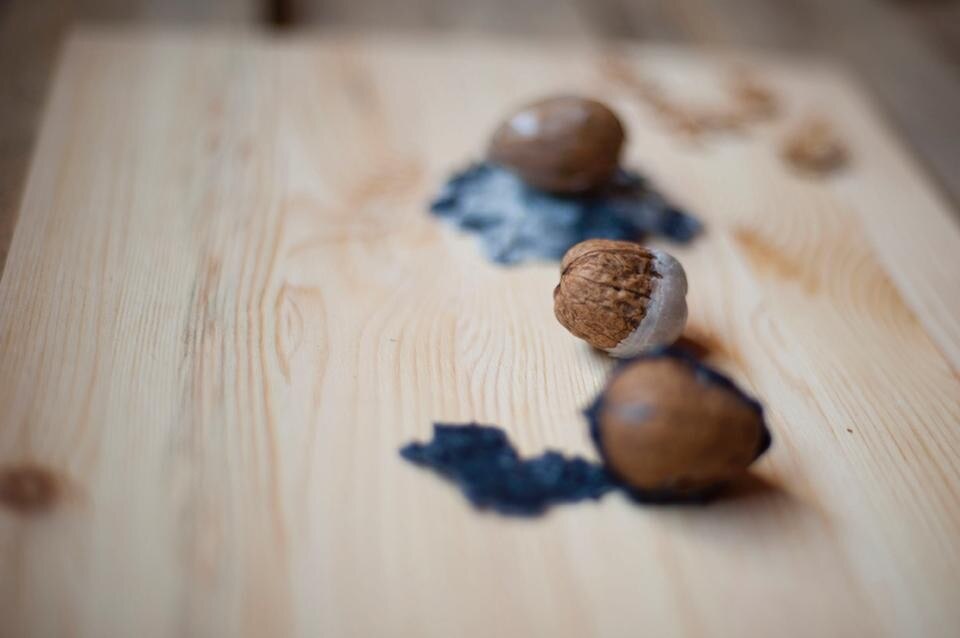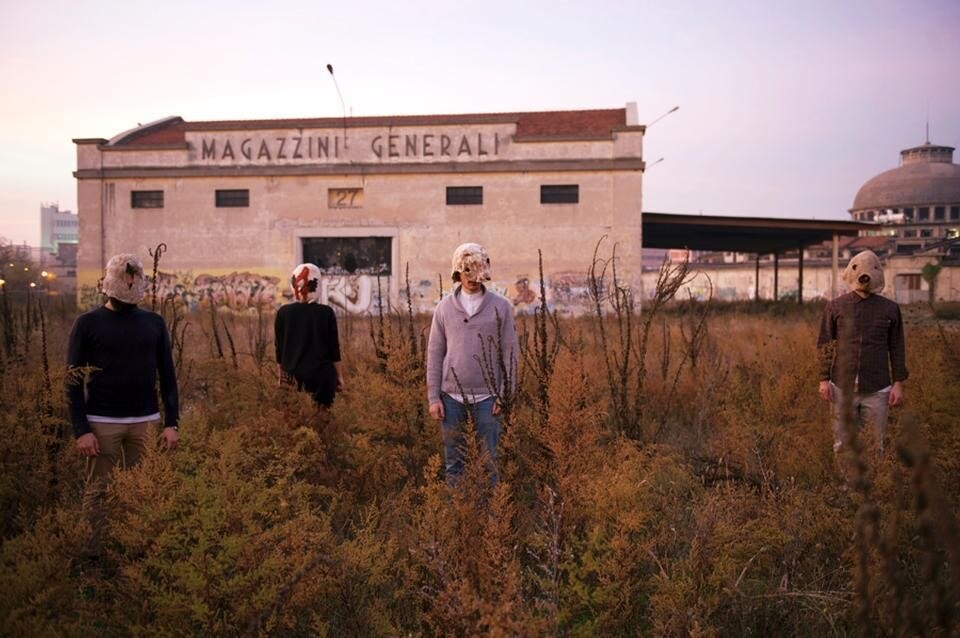First workshop: TASTEFULL with Studio FormaFantasma
OniricaLab discovers the other side of food with the workshop "TASTEFULL", the first leg of the year-long path. The workshop given by Andrea Trimarchi and Simone Farresin of Studio FormaFantasma, took place in Verona. The central theme of the laboratory was food and edible materials. The workshop was attended by 15 makers: designers from different backgrounds, cooks and students from universities and Art Academies, coming from all over Italy and personally selected by FormaFantasma. The workshop pushed the participants to overcome the conceptual barriers about food, to explore new ways of using and discover more complex chemical and dreamy combinations.
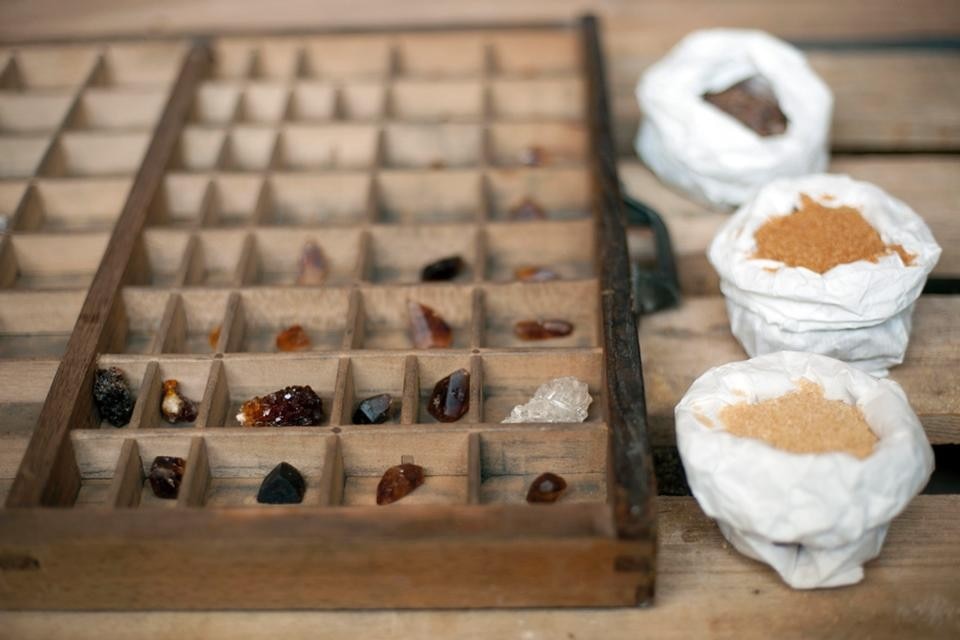
a-Food as paint
b-Food as inspiration for new production methods
c-Food as a formal and aesthetical inspiration
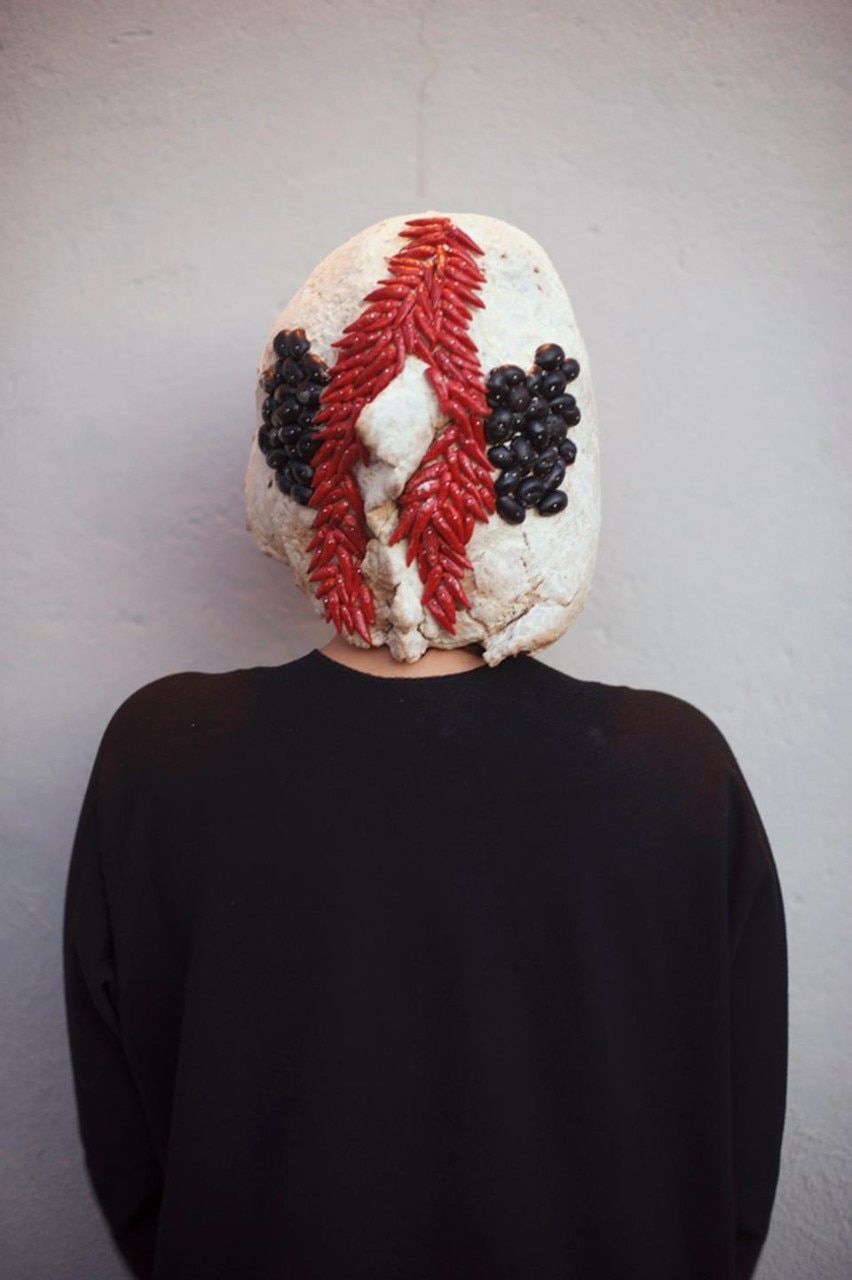
Food as paint
Colore nostrano tinto a mano by Maria Chiara Casarotto e Teresa Palmieri
Turnips, peas, saffron, wine, onions and more are boiled and filtered to obtain a surprising colour palette of food that belongs to the Veneto's culinary tradition. These dyes are used for the design of a new understanding of the tablecloth. Traditional recipes such as "rice and peas" or "risotto with radicchio di Treviso" are translated as a percentage of colour, where the symbols of the local area are investigated through the emotional power of colour.
L.ink by Giacomo Bagnara
Historically, lemon juice was used for writing invisible messages on paper. When heated it revealed the contents. Eight illustrations trace the history of the unknown origins of the lemon, its migration from India to ancient Rome until present day. As a poem, the lemon is used as ink / link to tell the fragments of the lost history of one of the most widely used ingredients.
With Tastefull, food loses its traditional function and becomes a material to produce objects and to express concepts.
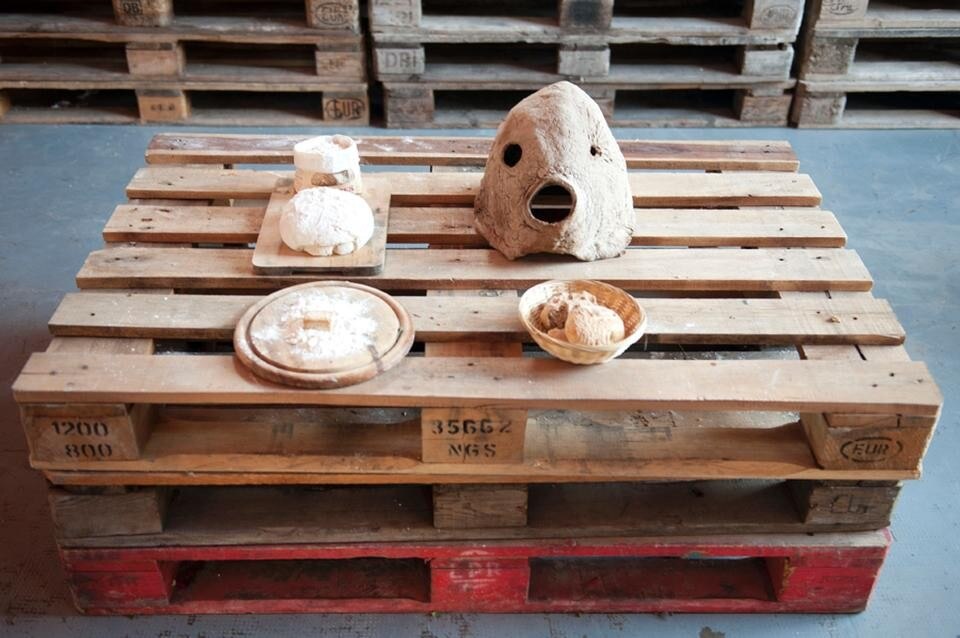
Gea by Giulia Cignacco
The concept of this project is the creation of a new type of natural polymer: starch potatoes and corn are analyzed for their capability of beign plastic and, at the same time, highly soluble, to produce a packaging for plants. Starting from the idea of food as a nutrient for plants, food such as yeast, organic waste and ox blood are added to this bioplastic. The substance then created is biodegradable and compostable and performs both the function of packaging for the plant and the function of nourishing it because it melts on contact with water, dropping inside it as a natural fertilizer. This project was called Gea, after the ancient Greek goddess, mother of all the Olympian gods and goddess of fertility and nature that represented the Earth itself.
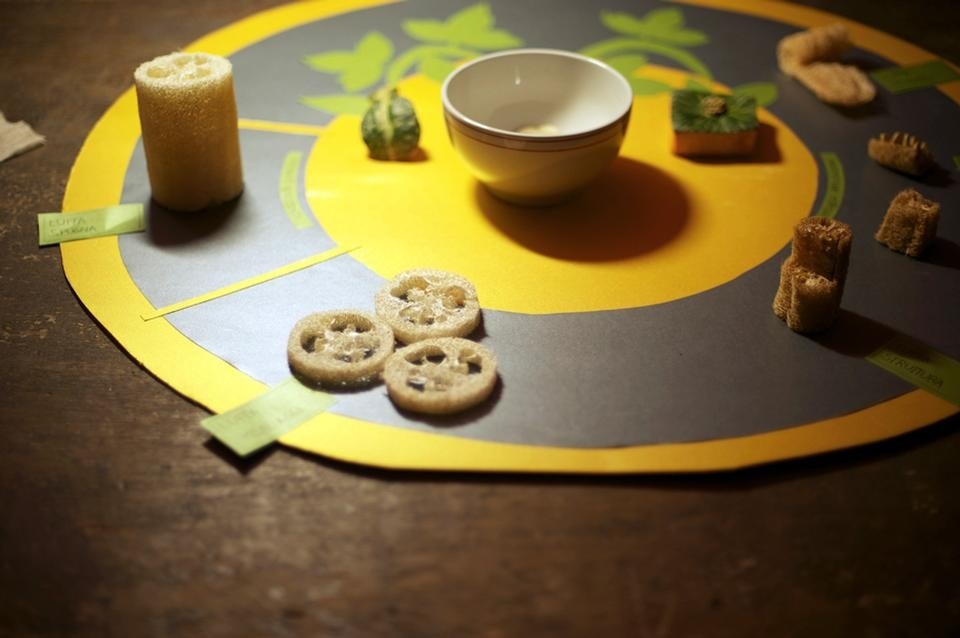
The project "Salt of the East" reconsiders the complex relationship with sugar that characterizes Western culture and its excessive use. In the Installation proposed by Gianmaria and Francesca sugar is processed, chiseled and polished into tiny nuggets of calories. The aesthetic seduction in this case becomes a vehicle for a more conscious consumption, where the formal elaboration and the design elevate the ordinary to the extraordinary and unique. The name of the project "Salt of the East" refers to sugar as it was defined in the past, a precious and rare product imported into Europe with the beginning of the colonial era.
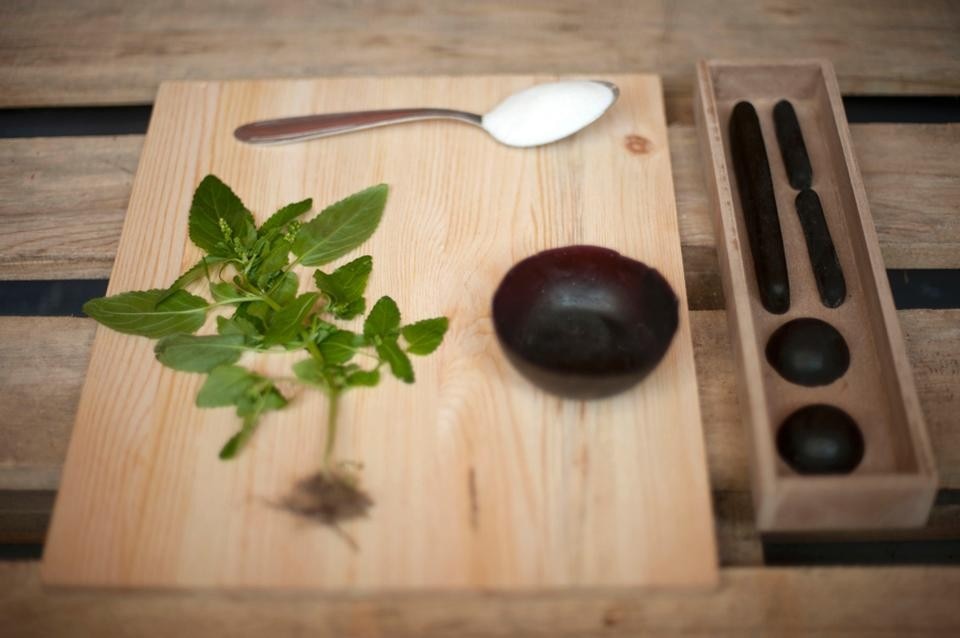
In this project, the plants have been investigated, discovering in their structure some functional and formal similarities with the industrial production of foams, upholstery and insulation. The loofah, a plant belonging to the family of Cucurbitaceae, halfway between pumpkin and courgettes, becomes the inspiration and the starting point for proposing a new material, with similar potential to industrial upholstery, which, biologically engineered and cultivated,may in future become a natural and biodegradable substitute for synthetic materials. In Daniela'sproposal, nature and industry meet generating a hybrid between farm and factory.
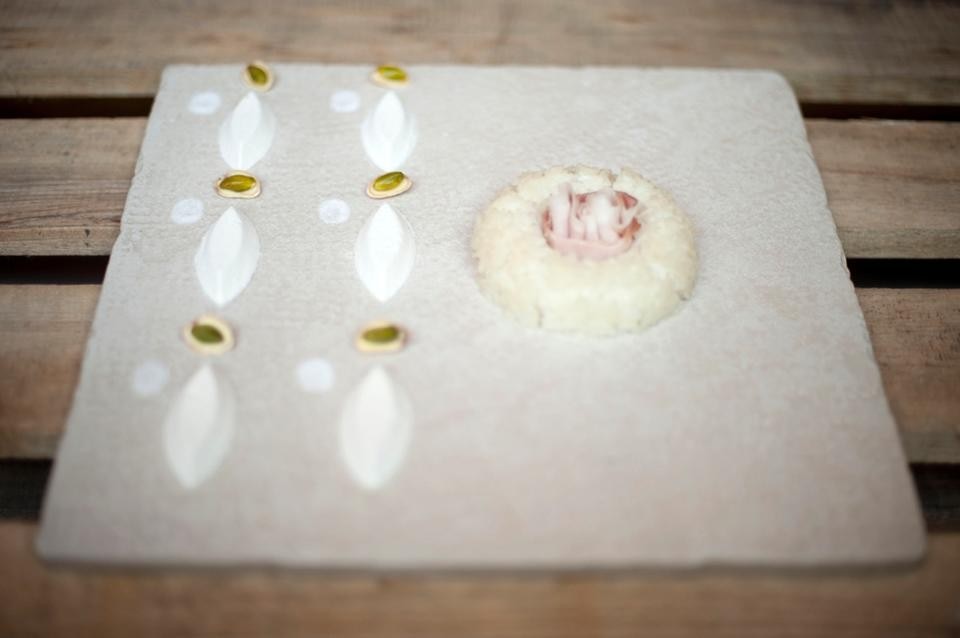
Inspired by the manufacture of biodegradable plastics made from potatoes and corn starch, in the project, the local production is turned into an extreme and self-sufficient utopian proposal. Farm and industry meet in a new hybrid production, where the waste from the production of olives and wine are engineered for the creation of new materials that are hyper-natural and hyper-local.
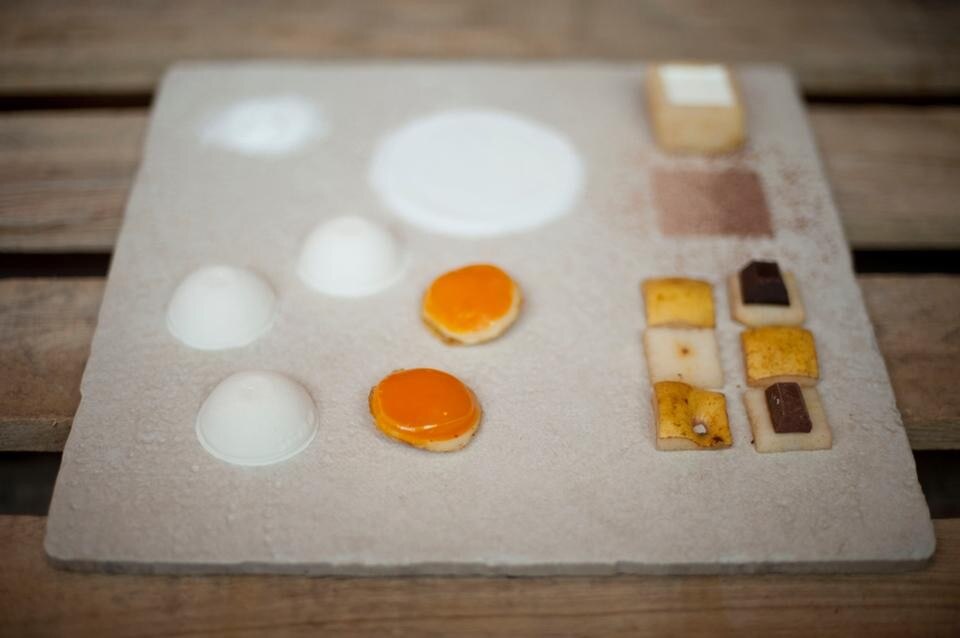
This project is an investigation into the methods of poultry production, and into the disproportion between the demand for chicken breasts and for other parts of the animal. Using an ironic but accurate representative method, the chicken becomes a new mythical beast composed of 13 breasts, 3 wings, 5 thighs and 1/2 heart (in relation to the European average consumption). Elena offers an installation that is able to raise awareness about a more responsible consumption and to encourage a way of cooking more carefully to recover the rural traditions, in which nothing was discarded. During the performance the hot dogs, where all the chicken waste is hidden and re-assembled industrially, are served in single portions that recall the aesthetics of the "manufacture" of the flesh.
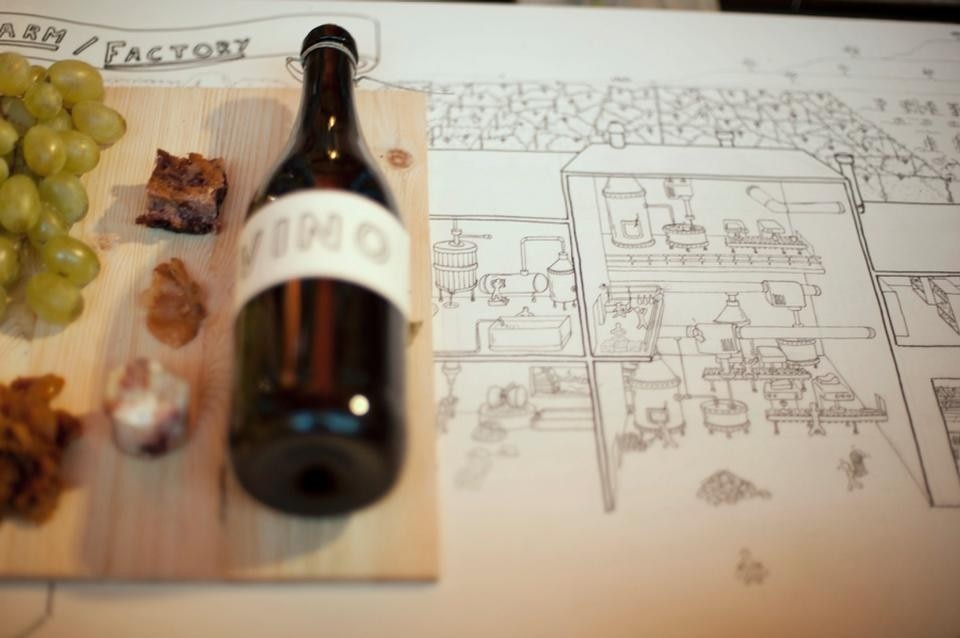
L'appetito vien guardando by Lucia Gaspari
In this project, the food is made / broken and baked / assembled in geometric structures apparently abstract and random. This idea is actually a new opportunity to explain the recipes: the image is not representative of the ready-made meal, but a graphic and esthetic result of the ingredients and of the percentages of reach. The image of the food is radicalized to facilitate the immediate vision and understanding of the structure of the recipe. Lucia goes against the traditional typical iconography of cookbooks.
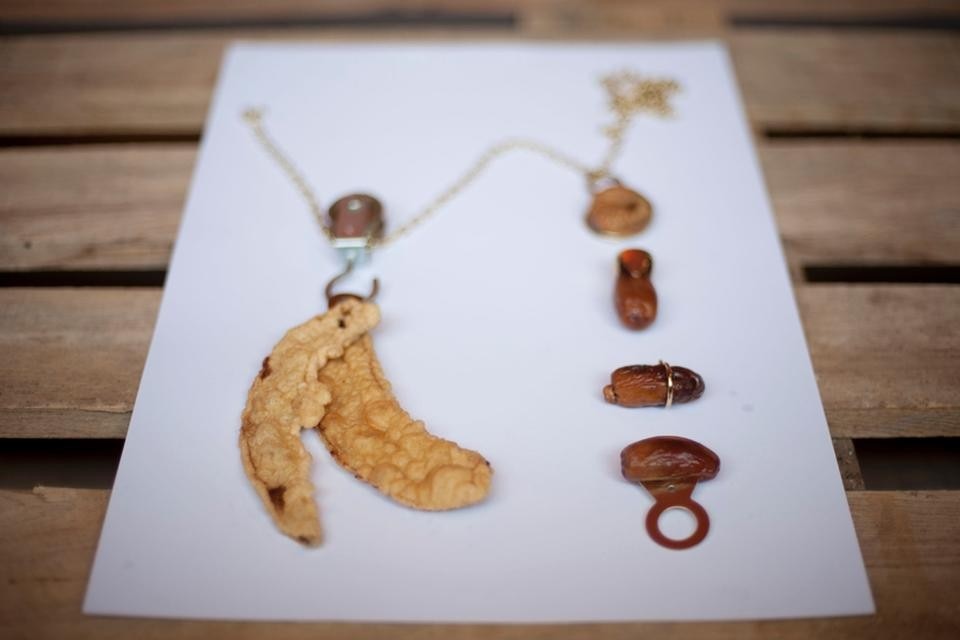
In Sofia's project, nuts such as chestnuts, walnuts and hazelnuts, which once consumed leave an empty shell, become pretty reliquaries with a domestic and impeccable taste. With a poetic and introspective attitude, Sofia has embarked on a journey to the tiny and intimate, filling the void left by the food consumed, with individual memories and secrets. The empty shells of food have been sealed and made inaccessible in some cases using simple everyday materials like wax, wire and scraps of cloth.
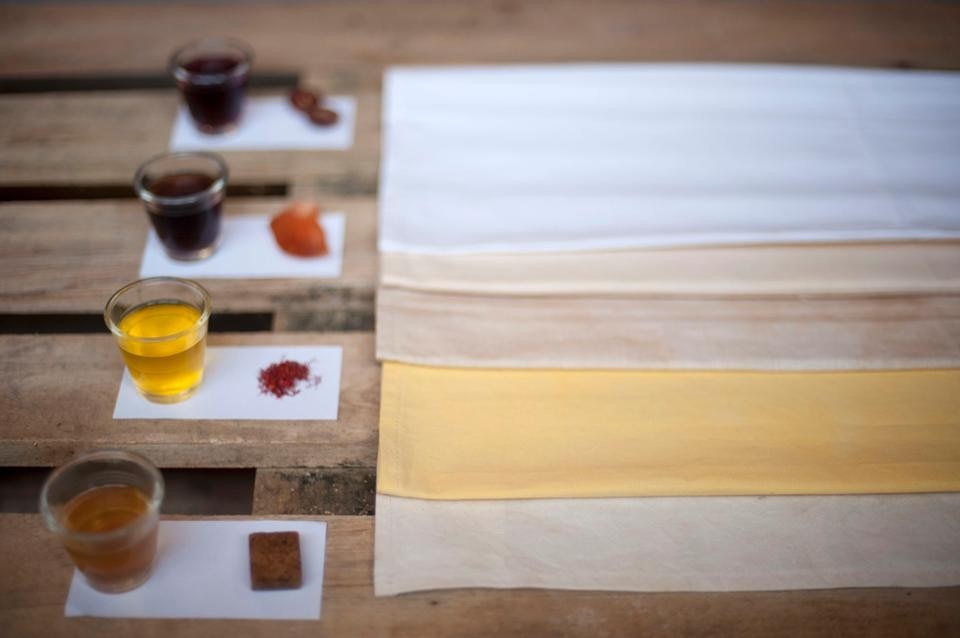
In Vera's project, fruit and vegetables in season are investigated from a formal point of view, to discover in them wrinkles and imperfections that become inspiration for a new typefont. Vera plans to develop other fonts to illustrate spring, summer and autumn, to encourage a more informed consumption of seasonal food. The language becomes a semantic game for the creation of new serving suggestions. Imagine what taste the word winter could have.
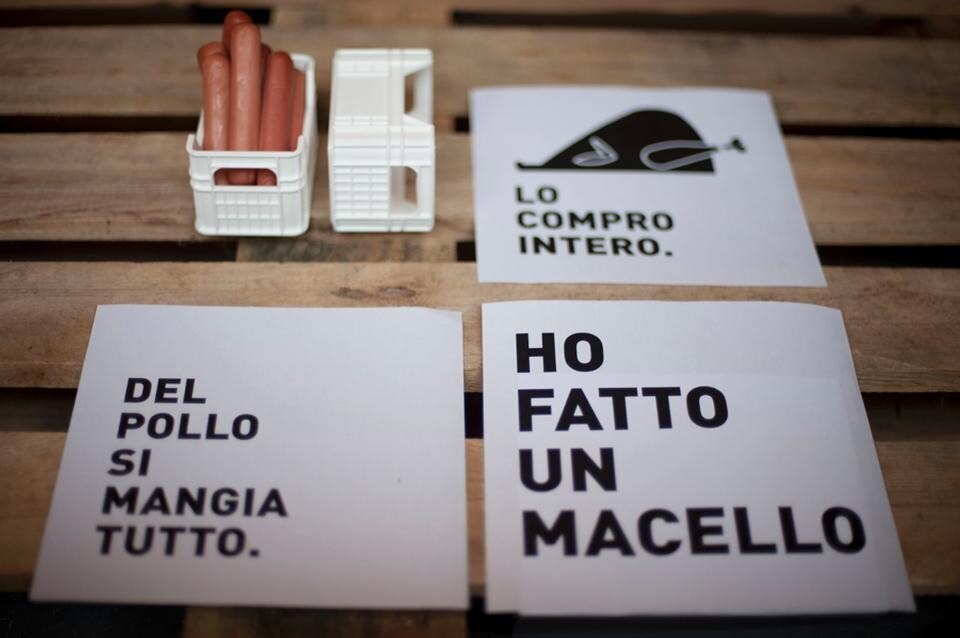
This project is inspired by the cannibalism of the indigenous tribes and becomes a metaphor for human relationships. Sara has given shape to a metaphoric concept with the creation of masks born from bread and edible icing. The project suggests a new food ritual that is both a decoration and symbolic. Feeding becomes an act of violence, "the other" is literally devoured. In the case of Sarah food becomes an instrument for the theatrical representation of the contemporary myth of Pantagruel.
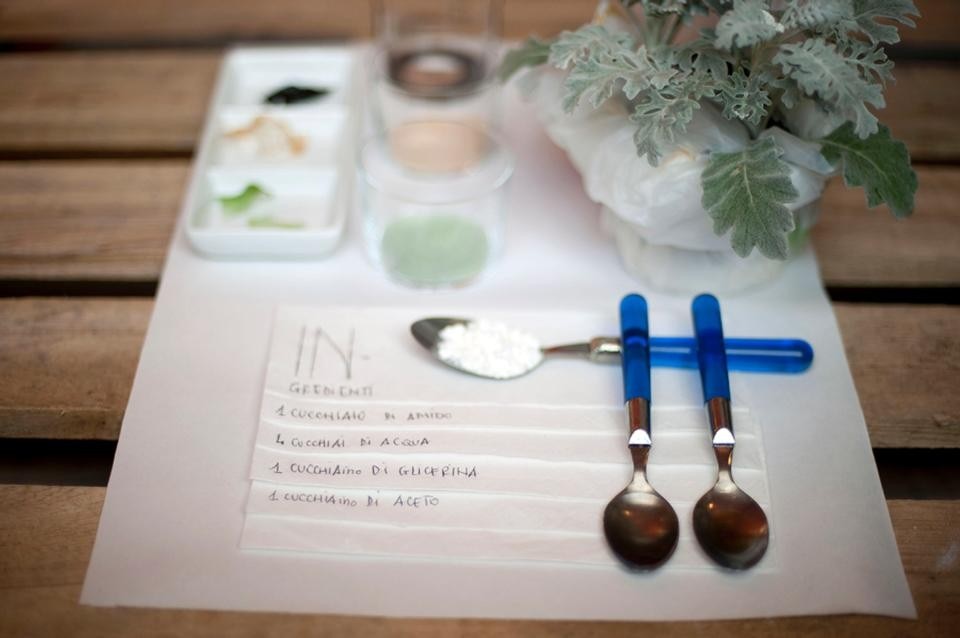
The work of Elisa uses food as a source of material for the composition of ephemeral jewellery from symbolic content. Elisa sees a link between the jewel, an object that symbolizes the aesthetic, and the complex relationship between our company and the consumption of food. Caramelized vegetables, fried bacon, dates and other hyper-caloric "decorations" become the precious stones of sarcastic edible jewels, a provocative and undisputed comment on our relationship with thinness and obesity.
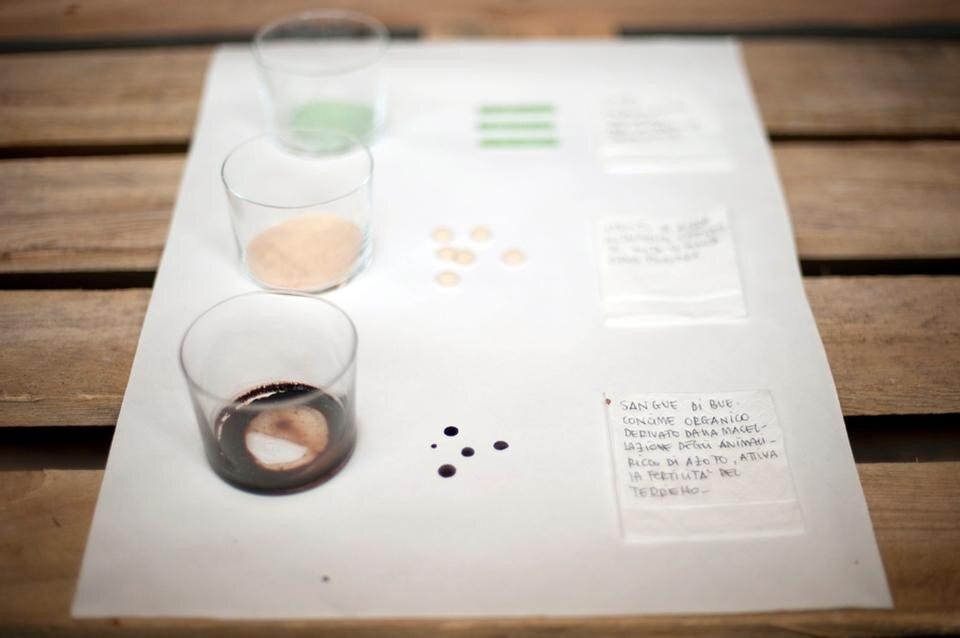
Stevia is a plant long used in Japan for its high power, low-calorie sweetener. The plant was banned for many years, and only recently has the EU lifted the ban. With this in mind Francis assumed a new destiny for sugar. In a vision of the future between utopia and reality, the project foresees the decay of sugar as the main sweetener. Sugar becomes a new luxury product that, as cigars, will be consumed by a few hedonist lovers of sweetness. In the presentation sugar is crafted as crystal and glass to produce highly aesthetic abstract and geometric shapes.
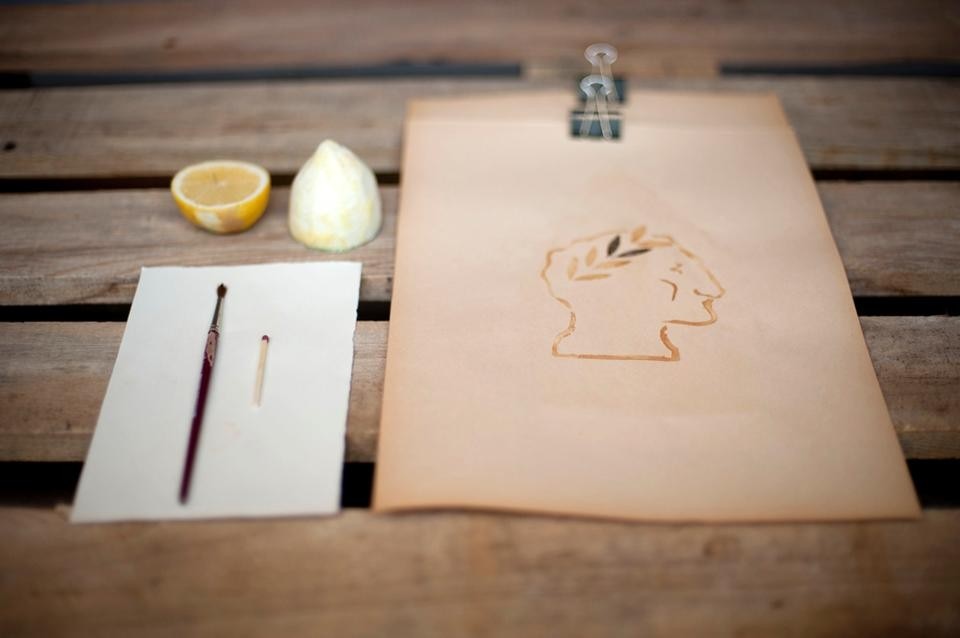
OniricaLab is a Fuoriscala project that, in its third year has started to collaborate with three other cultural associations from the area: Interzona, OndeQuadre and Reverse.
